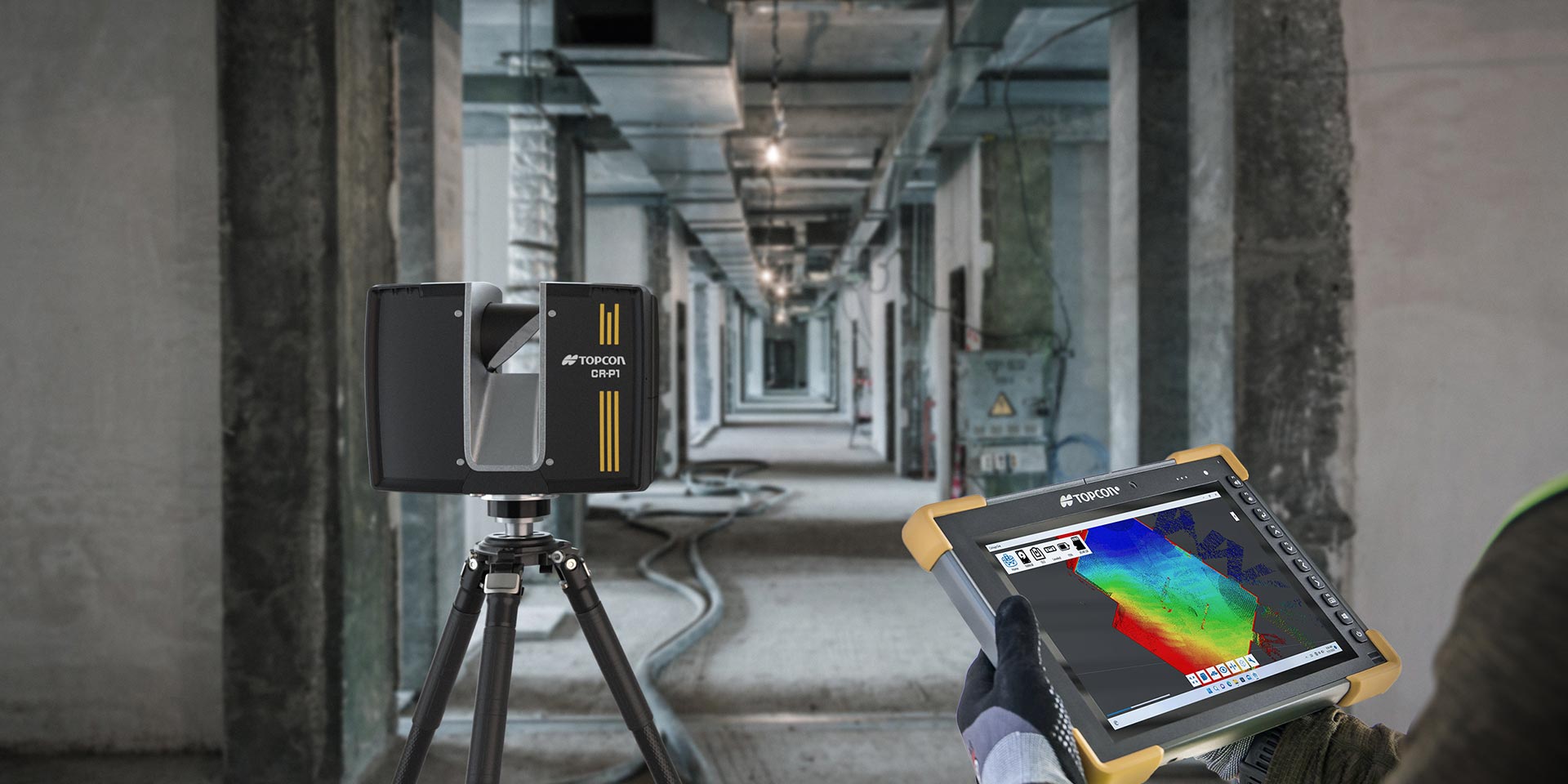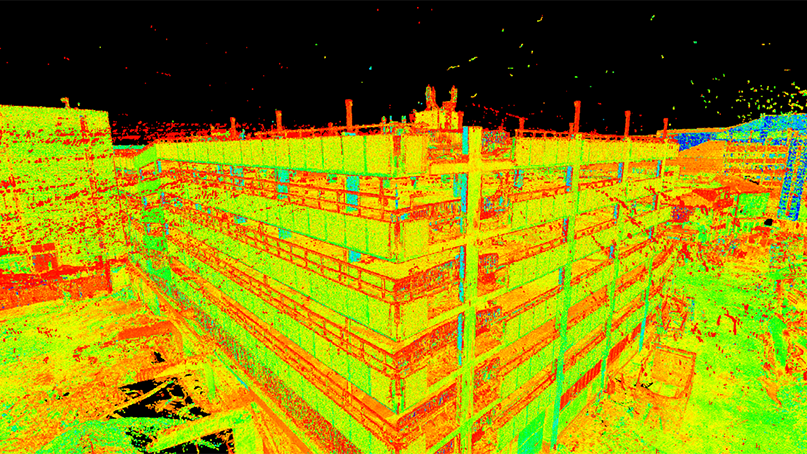Why 3D Scanning Enhances Eco-Friendly Planning
Enhancing Production Processes: The Effect of 3D Laser Scanning on Quality Assurance
3D laser scanning technology is changing quality assurance in production. By supplying high-resolution information and precise dimensions, it makes it possible for manufacturers to recognize variances from specifications effortlessly. This innovation not just streamlines examination processes however also boosts operational efficiency. 3D Scanning. However, the execution of this innovation comes with its own set of obstacles. Discovering these aspects reveals the wider effects for industries and the future landscape of manufacturing

Understanding 3D Laser Scanning Technology
Although 3D laser scanning innovation has evolved significantly in recent times, its essential concept stays simple: recording the specific geometry of things making use of laser beams. This technology employs laser light to gauge ranges in between the scanner and numerous points on a things's surface. The information collected is after that refined to create a detailed 3D model, accurately mirroring the dimensions and shapes of the scanned object.
Typically, 3D laser scanners can be categorized right into 2 major kinds: contact and non-contact scanners. Get in touch with scanners physically touch the things to gather dimensions, whereas non-contact scanners utilize laser light beams to record data from a range. The convenience of this innovation enables its application across various markets, consisting of construction, production, and style. Its capacity to create high-resolution designs facilitates top quality control, reverse engineering, and fast prototyping, eventually boosting design precision and performance in production processes.
Benefits of 3D Laser Scanning in Manufacturing
As manufacturers seek to boost performance and precision in their procedures, the benefits of 3D laser scanning have ended up being progressively evident. This cutting-edge modern technology permits rapid and very exact measurements of complex geometries, significantly lowering the moment required for quality checks. By recording thorough information, producers can identify inconsistencies early in the manufacturing procedure, thereby lessening waste and revamp expenses.
3D laser scanning assists in much better design recognition, making it possible for engineers to contrast as-built problems with original specs. This capacity assures that any type of deviations are without delay attended to, enhancing overall product top quality. On top of that, the modern technology sustains the development of electronic doubles, which can be utilized for simulations and process optimizations. Because of this, suppliers not just increase their operational performance yet additionally enhance their competitive benefit in the marketplace. On the whole, the assimilation of 3D laser scanning stands for a transformative step towards attaining higher standards in making quality assurance.
Integration of 3D Laser Scanning Into Quality Assurance
Incorporating 3D laser scanning into top quality control processes enhances the accuracy and effectiveness of evaluations throughout production. This technology makes it possible for manufacturers to capture detailed, high-resolution data of components and assemblies, allowing for accurate measurements and contrasts against layout specs. By employing 3D laser scanning, companies can determine discrepancies from resistances better, which is important for keeping product honesty.

Real-World Applications and Case Research Studies
Real-world applications of 3D laser scanning in manufacturing demonstrate its transformative impact throughout various markets. As an example, aerospace business use this technology to perform exact inspections of elements, ensuring they fulfill rigorous safety and security requirements. A remarkable case entailed a leading airplane supplier that utilized 3D laser scanning to enhance its quality from this source assurance processes, significantly reducing examination times and errors.
In the vehicle sector, producers have implemented laser scanning to create digital twins of their automobiles, making it possible for real-time changes throughout production. One auto firm reported a 30% decrease in rework costs after integrating this technology into their assembly lines.
Furthermore, in the customer products sector, firms are making use of 3D laser scanning for rapid prototyping, allowing for quicker versions that site and boosted item layouts. These applications illustrate how 3D laser scanning not just boosts precision but additionally improves performance and development throughout numerous manufacturing domains.
Conquering Difficulties in Implementation
Implementing 3D laser scanning in making presents a number of challenges that organizations need to navigate to completely understand its benefits. One significant obstacle is the preliminary price of tools and software program, which can discourage companies from embracing this modern technology. Furthermore, incorporating 3D laser scanning right into existing process requires getting rid of resistance to alter among workers, necessitating thorough training programs to guarantee proficiency. Data monitoring additionally presents a difficulty, as the high volume of info generated by 3D scanning need to be successfully refined and assessed to acquire workable understandings. Compatibility concerns with heritage systems might hinder smooth assimilation, requiring prospective upgrades or alterations. Attending to these challenges is essential for makers intending to boost high quality control and optimize manufacturing procedures. By creating clear techniques for training, financial investment, and information administration, business can minimize these obstacles and launch the transformative capacity of 3D laser scanning in their procedures.
Future Patterns in 3D Laser Scanning for Production
As producing continues to progress, the integration of 3D laser scanning with increased automation is expected to transform production processes. Improved information analytics will play a crucial duty in improving and maximizing workflows top quality control. These fads highlight the possibility for higher performance and precision in producing atmospheres.

Boosted Automation Combination
The combination of automation in production has actually been progressive, the future of 3D laser scanning is poised to increase this fad substantially. As making processes come to be increasingly intricate, the need for specific, real-time dimensions grows. 3D laser scanning modern technology provides automated information capture, reducing labor expenses and minimizing human mistake. This integration enables suppliers to improve quality assurance procedures, allowing fast discovery of discrepancies in manufacturing. In addition, the alignment of 3D laser scanning with robotics and automated systems helps with smooth operations, improving overall efficiency. As producers take on these innovative innovations, they can anticipate better precision and efficiency, placing themselves competitively in a quickly developing market. The synergy in between automation and 3D laser scanning marks a considerable leap onward in producing advancement.
Improved Information Analytics
The assimilation of automation has paved the way for advancements in information analytics within the domain name of 3D laser scanning. Manufacturers are increasingly leveraging sophisticated formulas and machine discovering strategies to evaluate substantial datasets generated by laser scans. This enhanced data analytics capability permits real-time tracking of making procedures, making it possible for the identification of discrepancies and defects better than typical approaches. Predictive analytics can visualize prospective problems, greatly reducing downtime and improving overall effectiveness. Additionally, the capability to imagine information in 3 dimensions provides deeper understandings right into manufacturing process, promoting far better decision-making. As 3D laser scanning technology remains to evolve, the function of information look here analytics will certainly end up being significantly crucial in driving development and keeping affordable benefit in production.
Frequently Asked Concerns
What Industries Advantage one of the most From 3D Laser Scanning?
The industries that profit most from 3D laser scanning consist of manufacturing, building, aerospace, automotive, and healthcare. These fields make use of the innovation for precision dimensions, high quality guarantee, and reliable layout procedures, significantly enhancing overall operational performance.
Just How Does 3D Laser Scanning Contrast to Standard Measurement Methods?
3D laser scanning provides higher precision and rate compared to standard measurement approaches. It records detailed geometries swiftly, decreasing human error and assisting in far better evaluation, which eventually boosts general quality control in different industries.
What Is the Expense of Carrying Out 3D Laser Scanning Innovation?
The price of applying 3D laser scanning innovation varies substantially, commonly varying from $10,000 to $100,000, relying on training, devices, and software. Organizations should weigh these expenditures against potential effectiveness and top quality renovations.
Are There Specific Software Program Requirements for 3D Laser Scanning?
Yes, 3D laser scanning needs details software program, including data handling and modeling applications. Typical choices include CAD software, point cloud processing devices, and specialized applications that assist in the integration and analysis of scanned data for optimal outcomes.
How much time Does a Regular 3D Laser Scanning Process Take?
A regular 3D laser scanning process can take anywhere from a couple of mins to a number of hours, relying on factors like the size of the object, intricacy of the setting, and called for degree of information for accuracy.
3D laser scanning modern technology is transforming high quality control in production. 3D laser scanning technology has advanced considerably in current years, its fundamental concept continues to be uncomplicated: capturing the precise geometry of things making use of laser beams. Incorporating 3D laser scanning right into high quality control processes boosts the precision and performance of examinations throughout production (3D Scanning). 3D laser scanning innovation offers automated data capture, lowering labor costs and lessening human error. The cost of executing 3D laser scanning technology varies considerably, normally ranging from $10,000 to $100,000, depending on software application, training, and tools